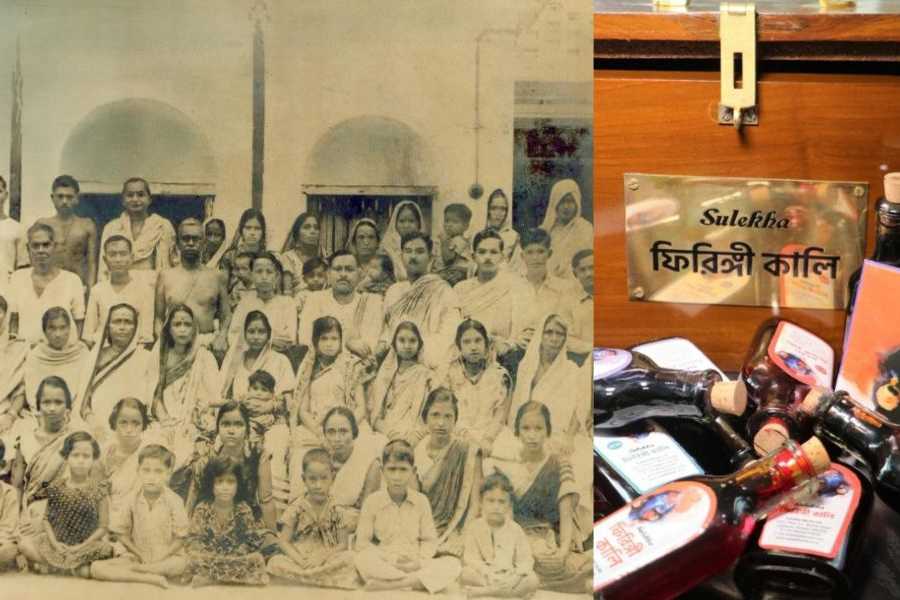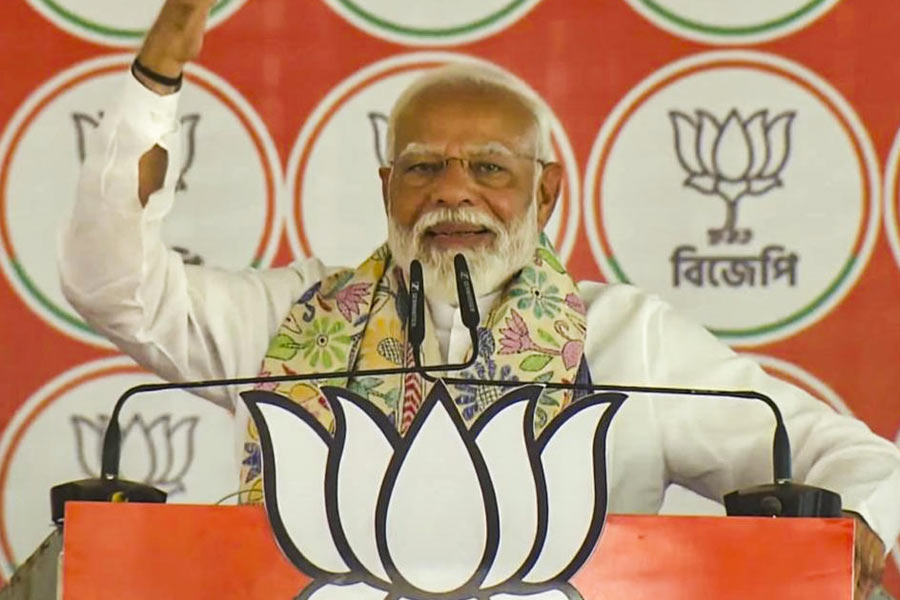Until the late 1920s there was no indigenous ink in the Indian subcontinent. Leaders of the Freedom Movement, including Mahatma Gandhi, were in a quandary — they had to write the manifesto boycotting foreign goods in foreign ink. That was when Gandhi got in touch with Satish Chandra Dasgupta, a freedom fighter and a chemist with Bengal Chemicals, who came up with a swadeshi ink. Dasgupta passed on the formula to two brothers Shankaracharya and Nanigopal Maitra, who were also involved in the freedom movement.
The Maitra brothers started producing the ink at their home in Rajshahi, which is now in Bangladesh. It was commercially marketed as Sulekha, a name apparently coined by the poet laureate Rabindranath Tagore. That was in 1934.
The ink became popular, the family scaled up its production and at some point the women of the Maitra family — sisters-in-law Purnima, Urmila and Kalpana — got involved in the business. Family legend has it that a British woman, possibly the wife of a civil servant, became a loyal customer. She was an artist, adept at making pen-and-ink sketches.
“This memsaheb visited our ancestral home and befriended the women of the Maitra family,” says Kaushik Maitra who is the current owner of Sulekha. He continues, “No one remembers her name now, but in family lore she is referred to as ‘Mom Didi’ or ‘Mom Memsaheb’, perhaps because she was as pretty as a wax doll.”
To communicate with the Bengali women, Mom Didi picked up the basics of Bengali. And having done so, she asked the Maitras for special ink for her watercolours. She had a rather definite request — she was looking for muted colours.
The Maitra brothers were initially reluctant to comply with her request. Was she a British spy deployed by the sahebs to sabotage Sulekha? They couldn’t dismiss the possibility. But the women of the family would have none of this idle speculation. They argued with the men, convinced Nanigopal otherwise and got him to work on the formula of some new inks which came to be retailed as Firingi Kali.
It was a clever coinage for sure, tongue firmly in cheek. Nanigopal named the ink so, as the kali was made for a firingi, or someone of European origin. When the ink was relaunched in 2022, the makers worked on a pun on the words Firingi Kali.
The term firingi has been used in the 18th and 19th centuries to refer to any European or a person of mixed parentage. The Indo-Portuguese kabiyal or poet singer Hensman Anthony, earned the appellation of Anthony Firingi. In one of his performances, he himself sings, “Bhajan pujan jani ne Ma/Jatete firingi/Jadi daya kare kripa karo/Hey Shiva Matangi.” One part of it translates thus: “I do not know any kind of worship, O Mother, because I am a Firingi by caste.”
Anthony Firingi worked as a clerk at Farashdanga, another name for the French colony of Chandernagore, but eventually he moved to Bowbazar Street in Calcutta. The Kali temple that he and most likely other Europeans frequented, at the crossing of Central Avenue and B.B. Ganguly Street, is till today known as Firingi Kalibari.
But notwithstanding the pun, Firingi Kali was forgotten soon after it was launched and it remained that way until some years ago, Kaushik came across Nanigopal’s diary wherein he had written down the formula of all six shades of ink.
In 2007, when Sulekha was turning around after two decades of downward sliding business, fountain pen collector Suvobrata Ganguly requested Kaushik to recreate the ink and market it. The six shades they made in the laboratory turned out to be pretty pastel shades, ideal for painting. Ganguly tested all the colours and found them to be extremely elegant. “The grey in the box is my favourite — it’s so soft and graceful,” he says. According to him, Europeans have a penchant for muted colours, unlike Indians who love bright shades.
Adds Kaushik, “We decided to specially package the set of six and market it as a premium product.” To give an antique look they chose to pack each of the 50ml shades in glass bottles — typically used for alta — with cork stoppers. Each box is priced at Rs 6,000. Taking off from the name, the branding includes a picture of Kali and a booklet containing the story of Firingi Kali’s genesis.
There’s also a set of six postcards, each with a note on the six colours — pale red, light orange, grey, sacred green, karmic brown and lavender — and their significance.
Firingi Kali, packed in a teakwood box with brass latches, has evoked a warm response among fountain pain aficionados like Matthew Gore of Seattle in the US. Gore has a vlog to review novel fountain pens and ink. He found Firingi Kali has “a smooth flow” and the six “shades are modest”. Neither do they feather — a term that means soaking into the paper fibres irregularly, making written lines look fuzzy.
Though Sulekha has been receiving several orders from the US and Europe, exporting a box of ink abroad is a tough task. “The glass bottles need extra care during shipping. The delivery cost far exceeds the price of the set,” says Kaushik.
But it’s not surprising that foreigners are showing keen interest in the ink. After all, it was formulated for a memsaheb.











